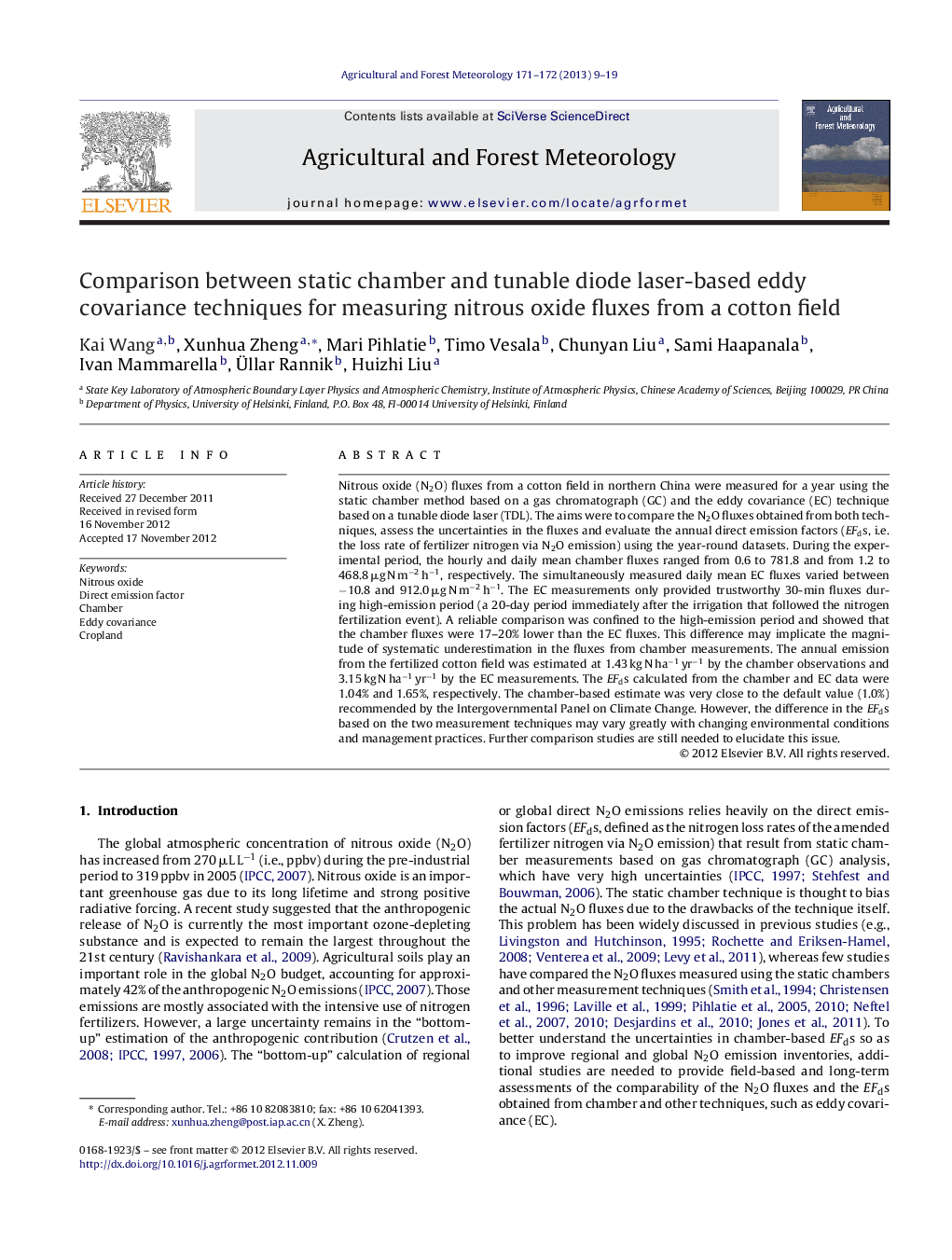| کد مقاله | کد نشریه | سال انتشار | مقاله انگلیسی | نسخه تمام متن |
|---|---|---|---|---|
| 81838 | 158354 | 2013 | 11 صفحه PDF | دانلود رایگان |

Nitrous oxide (N2O) fluxes from a cotton field in northern China were measured for a year using the static chamber method based on a gas chromatograph (GC) and the eddy covariance (EC) technique based on a tunable diode laser (TDL). The aims were to compare the N2O fluxes obtained from both techniques, assess the uncertainties in the fluxes and evaluate the annual direct emission factors (EFds, i.e. the loss rate of fertilizer nitrogen via N2O emission) using the year-round datasets. During the experimental period, the hourly and daily mean chamber fluxes ranged from 0.6 to 781.8 and from 1.2 to 468.8 μg N m−2 h−1, respectively. The simultaneously measured daily mean EC fluxes varied between −10.8 and 912.0 μg N m−2 h−1. The EC measurements only provided trustworthy 30-min fluxes during high-emission period (a 20-day period immediately after the irrigation that followed the nitrogen fertilization event). A reliable comparison was confined to the high-emission period and showed that the chamber fluxes were 17–20% lower than the EC fluxes. This difference may implicate the magnitude of systematic underestimation in the fluxes from chamber measurements. The annual emission from the fertilized cotton field was estimated at 1.43 kg N ha−1 yr−1 by the chamber observations and 3.15 kg N ha−1 yr−1 by the EC measurements. The EFds calculated from the chamber and EC data were 1.04% and 1.65%, respectively. The chamber-based estimate was very close to the default value (1.0%) recommended by the Intergovernmental Panel on Climate Change. However, the difference in the EFds based on the two measurement techniques may vary greatly with changing environmental conditions and management practices. Further comparison studies are still needed to elucidate this issue.
► Chamber technique was sensitive and robust, but underestimated N2O fluxes by 17–20%.
► Eddy covariance (EC) technique performed well for measuring high N2O fluxes.
► EC technique was still quite uncertain for measuring low N2O emissions.
► Chamber and EC measurements provided direct emission factors (EFds) of 1.04% and 1.65%.
► Further studies are needed to confirm the difference in the EFds from the two techniques.
Journal: Agricultural and Forest Meteorology - Volumes 171–172, 15 April 2013, Pages 9–19